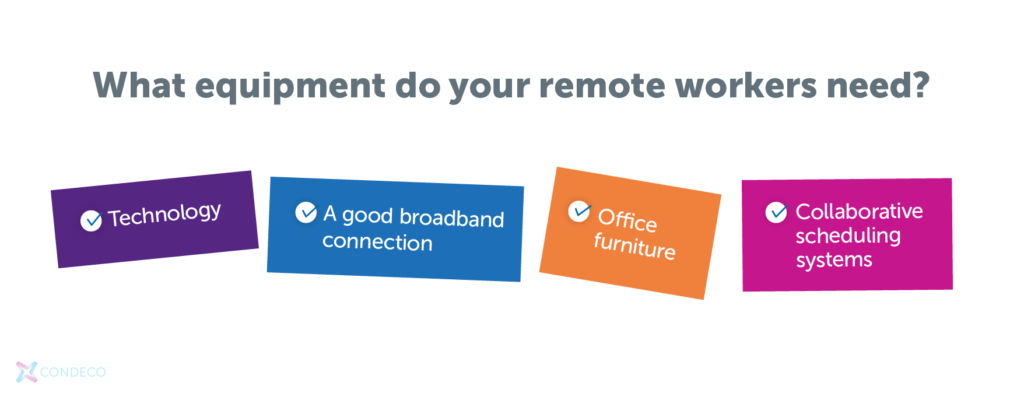
It’s fair to say that attitudes around remote and flexible working have changed significantly in the last couple of years. Previous perceptions among management that working from home was an excuse for employees to slack off, and that they couldn’t be trusted to do their jobs unless managers could physically oversee them, have rightly been consigned to the trash.

The numbers around this change are telling. Recent Condeco research has found that 80% of managers now trust their employees to get their jobs done when working remotely. Furthermore, the same proportion have found that their workforce are just as productive working from home as they are working in the office.
All this means that organizations all over the world are far more ready to embrace more flexible working models. But every good working philosophy needs to be backed up with the right equipment and technology to make it work in practice. In this blog, we’ll explore five key areas to address when ensuring that flexible workers can be productive anywhere, any time.

1. Technology
It might sound like it goes without saying, but there are very good reasons to make sure that remote workers have the most functional and up-to-date computing power available to them. It’s not only because of the extra efficiency and productivity that faster machines make possible, but also because of the reduced likelihood of something going wrong.
When employees work from home, it can be harder to get quick resolutions to problems from the IT team. Cutting out potential disruption with hardware that is fully functional, updated as appropriate, and fitted with robust security measures is therefore a quick win for any organization.

2. A good broadband connection
Of course, the best hardware in the world is pretty much useless to any remote worker if they don’t have a fast, reliable and secure connection to the Internet. Without it, their access to the vital data and applications they need to work day-to-day will be greatly impeded, or in the worst-case scenario, simply won’t be possible at all.
While the vast majority of employees will have a domestic Internet connection, they are unlikely to have the high speeds and cutting-edge security features of enterprise-grade connectivity. This makes it important for IT teams to assess the Internet set-ups of each remote worker, to ensure that vital corporate information isn’t being put at risk.
3. Office furniture
Connectivity isn’t the only thing that companies should assess for remote workers. Every home working environment is different: while some employees may have their own rooms set up as dedicated office space, others living in small or shared accommodation may have to resort to working from their couch or kitchen table.
Working hunched over a laptop for a long period of time, or seated in an uncomfortable position for typing, can easily lead to muscular injuries. This can not only affect productivity, but also leave employers open to compensation claims from injured employees. Every organization should therefore ensure that workstation assessments take place at the homes of every remote worker, and provide suitable desks, chairs and other ergonomic equipment as required.

4. Collaborative scheduling systems
Every employee, wherever they’re working, needs to be able to communicate with their co-workers easily. This can be through less formal collaboration like email or chat, or through more structured means like video meetings.
While the pandemic means that most employees are now equipped with these tools, one organizational hurdle that still often needs to be overcome is scheduling. With employees working in different places day-to-day, it can be hard to know who is available to collaborate where and when. A scheduling platform that allows employees to check each other’s diaries, and then make meeting bookings for mutually agreeable times, can make this process far quicker and easier.
How to entice remote workers back into the office
Most employees will still need to come into the office, whether on an occasional basis to collaborate with co-workers face-to-face, or so that they can get a quiet and peaceful environment to focus on something important. Either way, they need to be absolutely certain before they travel into the office that they will be able to access a workstation that suits their requirements.
The best way to achieve this is through a workspace booking platform, which employees can access across any type of device at any time. Through it, they can search for an appropriate workspace that’s available for the time they need it, immediately make a booking, and have the confidence that it’ll be ready and waiting for them the moment they arrive at the office.



